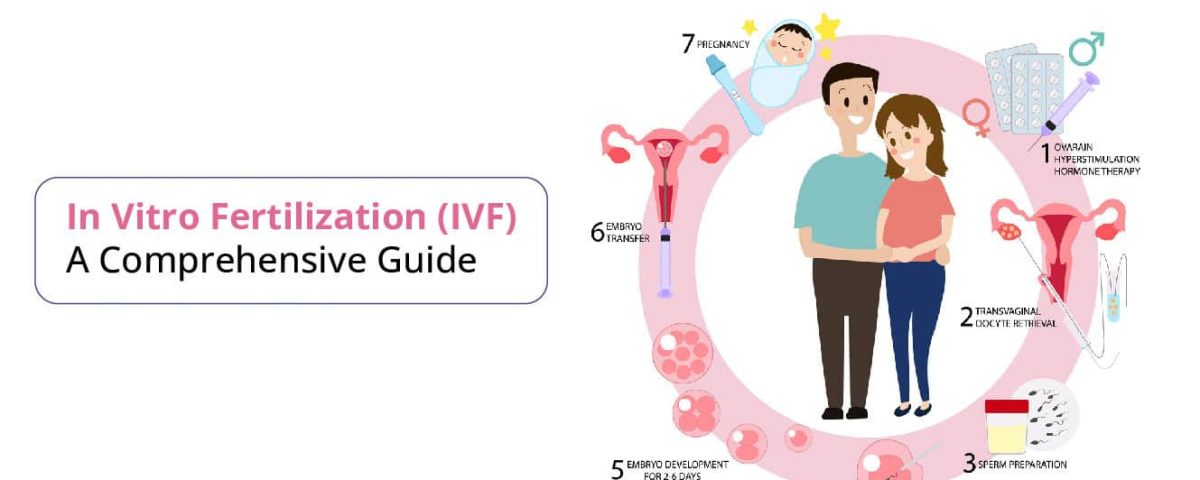
Frozen Embryo Transfer (FET) IVF: Your Ultimate Guide to a Hidden Gem in Fertility
April 28, 2025
Your Ultimate Guide to IVF Clinics in San Diego: Everything You Need to Know
April 29, 2025Your Ultimate Guide to the IVF Cycle: Everything You Need to Know
Welcome to your go-to resource for understanding the IVF (in vitro fertilization) cycle! If you’re here, you’re likely curious about how this process works, what to expect, or maybe even some lesser-known details that don’t always make it into the usual conversations. IVF can feel like a big, mysterious journey, but don’t worry—I’m breaking it all down for you in a way that’s easy to follow, packed with real-life insights, and sprinkled with tips to make it less overwhelming. Whether you’re just starting to explore fertility options or you’re already prepping for your first cycle, this guide has something for you. Let’s dive in!
What Is an IVF Cycle, Anyway?
An IVF cycle is like a carefully planned roadmap to help people grow their families when natural conception isn’t working out. In simple terms, it’s a process where doctors take an egg and sperm, combine them in a lab to create an embryo, and then place that embryo into the uterus to hopefully become a baby. It’s part science, part hope, and a whole lot of patience.
Each cycle takes about 4-6 weeks from start to finish, but it’s not just one long stretch—it’s broken into stages, each with its own purpose. Think of it like baking a cake: you need to gather ingredients, mix them just right, let it bake, and then see if it rises. Except here, the “ingredients” are hormones, eggs, and sperm, and the “oven” is your body or a lab dish!
Why People Choose IVF
People turn to IVF for all sorts of reasons:
- Trouble getting pregnant after trying for a while (usually a year if you’re under 35, or 6 months if you’re older).
- Blocked fallopian tubes, low sperm count, or other physical hurdles.
- Wanting to use donor eggs, sperm, or embryos.
- Hoping to screen embryos for genetic conditions before pregnancy.
But here’s something you might not hear often: some folks also pick IVF because it lets them plan their family on their terms—like single parents or same-sex couples who dream of having a baby. It’s not just about “fixing” something; it’s about creating possibilities.
A Quick Fun Fact
Did you know the first IVF baby, Louise Brown, was born in 1978? That’s right—IVF has been around longer than most of us have had cell phones! Since then, millions of babies have come into the world this way. Pretty cool, huh?
The IVF Cycle: Step-by-Step Breakdown
Let’s walk through the IVF cycle, stage by stage. I’ll keep it simple but throw in some details you might not find everywhere—like how it feels to go through it or what quirky habits people pick up along the way.
Step 1: Prepping Your Body with Hormones
Before anything else, your doctor will likely put you on medications to get your ovaries ready. This usually starts with birth control pills (weird, right?) to sync your cycle, followed by hormone shots to make your ovaries produce multiple eggs at once. Normally, your body releases just one egg a month, but IVF needs more to increase the chances of success.
- What It’s Like: You’ll give yourself shots (or have a partner help) every day for about 8-14 days. Some people say it’s like a tiny pinch; others compare it to a mosquito bite. Either way, it’s over fast!
- Unique Tip: Many folks turn this into a mini-ritual—playing their favorite song or sipping tea while they do it—to make it less stressful.
- Science Says: A 2023 study from the American Society for Reproductive Medicine found that women who produced 10-15 eggs had the best shot at a successful pregnancy, but more isn’t always better—too many can lead to complications.
Practical Advice
✔️ Keep your meds in the fridge and set a phone alarm so you don’t miss a dose.
❌ Don’t skip appointments—your doctor needs to check your progress with ultrasounds and blood tests.
Step 2: Egg Retrieval—Harvest Time!
Once your eggs are ready (your doctor will know from those ultrasounds), it’s time to collect them. This is a quick procedure—about 20-30 minutes—done under light sedation. A thin needle goes through your vaginal wall to scoop up the eggs from your ovaries.
- What It’s Like: You’re asleep for it, so no pain during. Afterward, you might feel bloated or crampy, like a heavy period. Some people binge-watch Netflix to recover; others swear by heating pads.
- Fun Fact: The average woman gets 8-15 eggs per cycle, but one person I heard about harvested 27! (She called herself an “egg factory.”)
- Expert Quote: Dr. Jane Frederick, a fertility specialist, says, “Egg retrieval is the unsung hero of IVF—it’s quick but sets the stage for everything else.”
Practical Advice
✔️ Wear comfy clothes and bring a friend to drive you home—you’ll be groggy.
❌ Don’t plan anything big that day; rest is your best friend.
Step 3: Fertilization in the Lab
Now, the magic happens in the lab. The eggs meet the sperm—either by mixing them together or injecting a single sperm into each egg (called ICSI, short for intracytoplasmic sperm injection). Over the next 2-6 days, embryologists watch the embryos grow.
- What It’s Like: You’re not there for this part, but it’s nail-biting waiting for updates. Some people get superstitious—wearing lucky socks or avoiding certain foods—hoping it helps.
- Cool Insight: Embryos are graded like report cards (A, B, C) based on how healthy they look. Not all make it, and that’s normal.
- Science Says: A 2024 study in Fertility and Sterility showed that growing embryos to the blastocyst stage (day 5 or 6) boosts success rates by 10-15% compared to earlier transfers.
Practical Advice
✔️ Ask your clinic for updates—most will call with a report.
❌ Don’t Google every term they use; it’ll drive you crazy—trust your team instead.
Step 4: Embryo Transfer—The Big Moment
Once your embryos are ready, one (or sometimes two) gets placed into your uterus using a thin tube. It’s a simple procedure—no sedation needed—and takes about 10 minutes.
- What It’s Like: It feels like a Pap smear—mildly awkward but not painful. Afterward, you might lie down for a bit, though studies show it doesn’t matter much. Some people treat it like a celebration, snapping selfies with their partner!
- Unique Twist: A friend of mine swore that eating pineapple core (it’s got an enzyme called bromelain) helped her embryo “stick.” No hard proof, but it’s a popular IVF hobby!
- Expert Quote: Dr. Aimee Eyvazzadeh, known as the “Egg Whisperer,” says, “The transfer is like planting a seed—gentle, hopeful, and a little magical.”
Practical Advice
✔️ Stay hydrated and relax—stress won’t change the outcome.
❌ Don’t test for pregnancy too early; it can lead to false results and heartbreak.
Step 5: The Two-Week Wait (TWW)
After the transfer, you wait 9-14 days to see if you’re pregnant. This is the hardest part for most people—time drags, and every twinge feels like a clue.
- What It’s Like: You might obsess over symptoms (or lack of them). Some people knit, bake, or binge true-crime podcasts to distract themselves. Others stalk online forums for “success signs.”
- Science Says: About 40-50% of transfers lead to pregnancy for women under 35, per the CDC’s 2023 data. Age, embryo quality, and luck all play a role.
Practical Advice
✔️ Plan fun distractions—movie nights, walks, anything but overthinking.
❌ Don’t take a home test before your clinic’s blood test; it’s more accurate.
What Makes IVF Different: The Hidden Details
Lots of articles cover the basics, but what about the stuff people don’t talk about? Here’s where we dig into the nitty-gritty that fans of fertility journeys crave.
The Emotional Rollercoaster
IVF isn’t just shots and appointments—it’s a wild ride of hope, fear, and everything in between. One day you’re dreaming of baby names; the next, you’re crying over a negative test. It’s normal to feel this way, but it’s not always out in the open.
- Real Talk: A 2023 survey by Resolve: The National Infertility Association found that 70% of IVF patients felt isolated at some point. Sharing your story (even anonymously online) can help.
- Tip: Journaling your feelings—or even doodling—can be a quiet hobby that keeps you grounded.
The Partner’s Side
If you’ve got a partner, they’re in this too, and their experience is often overlooked. They might feel helpless watching you take shots or stressed about providing a sperm sample on demand (yep, that’s a thing!).
- Fun Twist: Some partners turn into “IVF chefs,” whipping up nutrient-packed meals to support you. Think smoothies with spinach and flaxseed—gross to some, but sweet to others!
- Advice: Give them a job—like tracking meds or picking playlists—so they feel included.
Weird Habits and Superstitions
IVF folks develop some quirky habits:
- Sock Obsession: Wearing warm socks post-transfer is a big trend—some swear it keeps the uterus cozy.
- Food Rituals: Besides pineapple, people munch on Brazil nuts (for selenium) or avoid cold drinks (an old wives’ tale about “warming” the womb).
- Lucky Charms: One woman I know carried a tiny elephant figurine because it symbolized fertility in her culture.
These might not be science-backed, but they’re a peek into the IVF community’s heart.
Success Rates and What Affects Them
Everyone wants to know: Will it work? Here’s the scoop, straight from the latest stats and insights.
The Numbers
Success varies by age, per the CDC’s 2023 report:
- Under 35: ~46% chance of a live birth per cycle.
- 35-37: ~34%.
- 38-40: ~22%.
- Over 40: ~8% with your own eggs (higher with donor eggs).
What Boosts Your Odds?
- Embryo Quality: Healthier embryos (those A-grades) have a better shot.
- Lifestyle: A 2024 study in Human Reproduction found that cutting caffeine to under 200 mg/day and sleeping 7-8 hours boosted success by 5-10%.
- Clinic Choice: Some clinics have higher rates—check their stats on the SART (Society for Assisted Reproductive Technology) website.
Practical Advice
✔️ Quit smoking and limit alcohol—both hurt egg and sperm quality.
❌ Don’t assume more embryos mean better chances; it can raise risks like twins (cute but tricky).
Risks and Realities
IVF isn’t all sunshine—there are bumps to watch for.
Ovarian Hyperstimulation Syndrome (OHSS)
This happens when your ovaries overreact to the hormones, causing bloating or pain. It’s rare (1-5% of cases), but serious if ignored.
- Signs: Severe swelling, trouble breathing—call your doctor ASAP.
- Tip: Sip electrolyte drinks like Gatorade to stay balanced.
Multiple Pregnancies
Transferring more than one embryo can lead to twins or triplets, which sound fun but raise health risks for mom and babies.
- Science Says: Single embryo transfers are safer and just as effective with good embryos, per a 2023 European study.
Emotional Toll
Failed cycles hurt. A lot. It’s okay to take breaks—your mental health matters as much as your physical health.
Costs and How to Handle Them
IVF isn’t cheap—here’s the breakdown and some hacks.
The Price Tag
- Average cost per cycle: $12,000-$15,000 in the U.S., plus $3,000-$5,000 for meds.
- Add-ons (like genetic testing): $1,000-$5,000 more.
Money-Saving Tips
- Insurance: Some states (like New York) mandate coverage—check yours.
- Grants: Groups like Baby Quest offer aid—apply early!
- Shared Risk: Some clinics refund part of the fee if it doesn’t work after a few tries.
Practical Advice
✔️ Shop around—prices vary by clinic.
❌ Don’t skimp on a bad clinic to save cash; success rates matter more.
Latest Research: What’s New in 2025?
IVF is always evolving—here’s what’s hot right now.
AI in Embryo Selection
Clinics are using artificial intelligence to pick the best embryos. A 2024 trial in Nature Medicine showed AI boosted success rates by 12% by spotting tiny details humans miss.
Time-Lapse Imaging
Instead of checking embryos under a microscope, some labs use cameras to watch them grow 24/7. It’s less disruptive and gives better data.
Kinder Hormones
New drugs with fewer side effects (like less bloating) are in testing—expect them soon!
Expert Quote
Dr. John Zhang, a pioneer in fertility tech, says, “AI and imaging are like having a crystal ball for IVF—they’re changing how we predict success.”
Your IVF Toolkit: Tips for Every Stage
Here’s a handy checklist to rock your IVF cycle:
Before You Start
- Eat well: Think Mediterranean—fish, nuts, veggies.
- Move a little: Yoga or walks keep stress low.
- Talk it out: Find a support group or therapist.
During the Cycle
- Stay organized: Use a planner for shots and appointments.
- Rest up: Nap when you can—your body’s working hard.
- Lean on friends: Let them cook or just listen.
After Transfer
- Chill out: No heavy lifting, but you don’t need bed rest.
- Eat smart: Warm foods and protein help recovery.
- Be patient: The TWW is tough—trust the process.
Real Stories: IVF Up Close
Let’s meet some folks who’ve been there:
Sarah, 32
“I was terrified of needles, but I turned shot time into a dance party with my husband. We’d blast ‘Sweet Caroline’ and laugh—it made it bearable. Our little girl is 6 months old now!”
Mike, 40
“As the guy, I felt useless until I started researching recipes to boost egg health. Cooking for my wife became my thing. Our twins are due next month!”
Priya, 37
“After two failed cycles, I took up painting to cope. It didn’t ‘fix’ the IVF, but it gave me peace. Third time worked—I’m 20 weeks pregnant!”
These stories show there’s no “right” way to do IVF—just your way.
Busting IVF Myths
Let’s clear up some confusion:
- Myth: IVF always works on the first try.
Truth: It’s more like a 50/50 shot—patience is key. - Myth: You’ll definitely have twins.
Truth: Single transfers are the norm now—twins are less common. - Myth: It’s only for women.
Truth: Sperm issues are just as big a factor—IVF helps both sides.
Let’s Talk: Your Turn!
IVF is a journey, and no two paths are the same. What’s on your mind? Drop a comment below—share your story, ask a question, or tell us your favorite IVF distraction (pineapple core, anyone?). I’ll reply to as many as I can, and let’s build a little community right here. You’re not alone in this—let’s chat!
